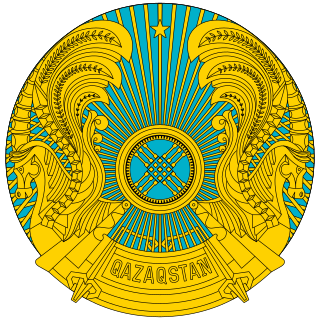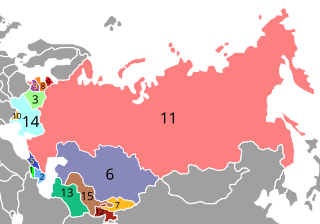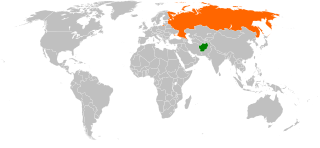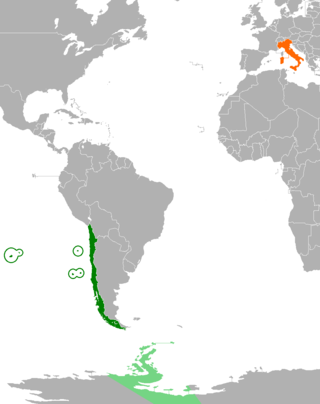List of friendship treaties
- ↑ The preamble of the treaty stating that it is a "Treaty of Friendship and Brotherhood"
A treaty of friendship, also known as a friendship treaty, is a common generic name for any treaty establishing close ties between countries. Friendship treaties have been used for agreements about use and development of resources, territorial integrity, access to harbours, trading lanes and fisheries, and promises of cooperation. Whilst not common, there are some treaties agreeing to some forms of military alliance which have use friendship terminology in their titles, [1] as well as some non-aggression pacts. Additionally, friendship treaties have also signalled an independent relationship with emerging states. [2]
Ancient Greeks distinguished between three different types of friendships between two polities: Philiai, symmachia, and epimachia. Both symmachia and epimachia were types of alliances, with the former committing States to support each other in battle and the latter requiring parties to assist each other if one suffered an invasion. Philiai, then, made the important distinction of denoting friendship between polities but did not give the treaty partners the status of allies. Romans had a similar word amicitia, which was a state of diplomatic relations which could coexist with an alliance, or exist without it. The Romans employed a practice of establishing peace and friendship with polities on its peripheries, though in practice these relationships were usually built on unequal treaties, requiring the neighbour to support Rome militarily, though not necessarily the reverse. [1]
In most cases, the friendship treaties are not based on equal partnership. This is particularly the case in treaties between aboriginal nations and the colonizers, both in America and in the Pacific, throughout the Colonial era. These treaties, often written primarily in the language of the coloniser, manipulated the terminology of friendship by the larger powers in order to create an environment of trust, primarily for the benefit of themselves. While promising protection in return for these benefits, the treaties are more subtle ways of accessing resources for commercial exploitation of smaller nations. [1]
Since the early 2000s, friendship in international relations has been under closer analysis. Whilst friendship terminology had always been used in discourse and diplomacy, the analysis of friendship in international relations had been dismissed as merely being synonymous with good relations. In 2007, Felix Berenskoetter called for the inclusion of friendship analysis into international relations and since then a modest body of literature around the concept has been formed. [3] [4]
In the Soviet Union, Agreement of Friendship, Cooperation, and Mutual Assistance or Treaty of Friendship, Cooperation and Mutual Assistance (Russian: Договор о дружбе, сотрудничестве и взаимопомощи) was a standard Russian language reference to various treaties both internally, between the Soviet Republics, and externally, with countries considered friendly. This terminology is still in use for some post-Soviet states. The terminology was used in many so-called "friendship treaties" the Soviet Union made, but also was used in the Warsaw Pact. [5]
In the United States, these types of treaties are commonly a Treaty of Friendship, Commerce and Navigation. More than a hundred "Treaties of Friendship, Commerce, and Navigation" have been signed since independence. Since 1946, these treaties have dealt with commercial matters concerned with the protection of persons, natural and juridical, and of the property and interests of such persons. They define the treatment each country owes the nationals of the other; their rights to engage in business and other activities within the boundaries of the former; and the respect due them, their property and their enterprises. [5]

Foreign relations of Kazakhstan are primarily based on economic and political security consideration. The Nazarbayev administration has tried to balance relations with Russia and the United States by sending petroleum and natural gas to its northern neighbor at artificially low prices while assisting the U.S. in the War on Terror. Kazakhstan is a member of the United Nations, Collective Security Treaty Organization, Organization for Security and Co-operation in Europe, North Atlantic Cooperation Council, Commonwealth of Independent States, the Shanghai Cooperation Organisation, and NATO's Partnership for Peace program. Kazakhstan established a customs union with Russia and Belarus which eventually became the Eurasian Economic Union. President Nazarbayev has prioritized economic diplomacy into Kazakhstan's foreign policy.

The Commonwealth of Independent States (CIS) is a regional intergovernmental organization in Eurasia. It was formed following the dissolution of the Soviet Union in 1991. It covers an area of 20,368,759 km2 (7,864,422 sq mi) and has an estimated population of 239,796,010. The CIS encourages cooperation in economic, political, and military affairs and has certain powers relating to the coordination of trade, finance, lawmaking, and security, including cross-border crime prevention.

The Shanghai Cooperation Organisation (SCO) is a Eurasian political, economic, international security and defence organization established by China and Russia in 2001. It is the world's largest regional organization in terms of geographic scope and population, covering approximately 80% of the area of Eurasia and 40% of the world population. As of 2021, its combined GDP was around 20% of global GDP.

The Agreement of Friendship, Cooperation, and Mutual Assistance of 1948, also known as the YYA Treaty from the Finnish Ystävyys-, yhteistyö- ja avunantosopimus, was the basis for Finno–Soviet relations from 1948 to 1992. It was the main instrument in implementing the Finnish policy called Paasikivi–Kekkonen doctrine.

The post-Soviet states, also referred to as the former Soviet Union (FSU) or the former Soviet republics, are the independent sovereign states that emerged/re-emerged out of the dissolution of the Soviet Union in 1991. Prior to their independence, they existed as Union Republics, which were the top-level constituents of the Soviet Union. There are 15 post-Soviet states in total: Armenia, Azerbaijan, Belarus, Estonia, Georgia, Kazakhstan, Kyrgyzstan, Latvia, Lithuania, Moldova, Russia, Tajikistan, Turkmenistan, Ukraine, and Uzbekistan. Each of these countries succeeded their respective Union Republics: the Armenian SSR, the Azerbaijan SSR, the Byelorussian SSR, the Estonian SSR, the Georgian SSR, the Kazakh SSR, the Kirghiz SSR, the Latvian SSR, the Lithuanian SSR, the Moldavian SSR, the Russian SFSR, the Tajik SSR, the Turkmen SSR, the Ukrainian SSR, and the Uzbek SSR. In Russia, the term "near abroad" is sometimes used to refer to the post-Soviet states other than Russia.

The Sino-Soviet Treaty of Friendship, Alliance and Mutual Assistance, or Sino-Soviet Treaty of Friendship and Alliance for short, was a bilateral treaty of alliance, collective security, aid and cooperation concluded between the People's Republic of China and the Union of Soviet Socialist Republics on February 14, 1950. It superseded the previous Sino-Soviet treaty signed by the Kuomintang government.

The Treaty of Good-Neighborliness and Friendly Cooperation Between the People's Republic of China and the Russian Federation (FCT) is a twenty-year strategic treaty that was signed by Jiang Zemin of China and Vladimir Putin of Russia, on July 16, 2001.

The Treaty of Amity and Commerce established formal diplomatic and commercial relations between the United States and France during the American Revolutionary War. It was signed on February 6, 1778 in Paris, together with its sister agreement, the Treaty of Alliance, and a separate, secret clause allowing Spain and other European nations to join the alliance. These were the first treaties negotiated by the fledgling United States, and the resulting alliance proved pivotal to American victory in the war; the agreements are sometimes collectively known as the Franco-American Alliance or the Treaties of Alliance.

The Balkan Pact of 1953, officially known as the Agreement of Friendship and Cooperation, was a treaty signed by Greece, Turkey and Yugoslavia on 28 February 1953. It was signed in Ankara. The treaty was to act as a deterrence against Soviet expansion in the Balkans and provided for the eventual creation of a joint military staff for the three countries. When the pact was created and signed, Turkey and Greece had been members of the North Atlantic Treaty Organization (NATO) for a year, having both joined on 18 February 1952, while Yugoslavia was a socialist non-aligned state that later became a founding member of the Non-Aligned Movement. The Balkan Pact allowed Yugoslavia to associate itself with NATO indirectly on geopolitical affairs. In October 1954, Israel showed some interest in joining the alliance in expectation that Yugoslavia could mediate in development of the Egypt–Israel relations. However, Israel never ended up joining the alliance.

The current and historical relations between the Argentine Republic and the Republic of South Africa, for over a century. Both nations are members of the Cairns Group, G20, Group of 77 and the United Nations.

Relations between Afghanistan and Russia first emerged in the 19th century. At the time they were placed in the context of "The Great Game", Russian–British confrontations over Afghanistan from 1840 to 1907. The Soviet Union was the first country to establish diplomatic relations with Afghanistan following the Third Anglo-Afghan War in 1919. On 28 February 1921, Afghanistan and the Soviet Russia signed a Friendship Treaty. The Soviet Union intervened in Afghanistan against the Basmachi movement in 1929 and 1930.

Republic of the Congo–Russia relations refers to bilateral foreign relations between the Republic of the Congo and Russia. The Republic of the Congo has an embassy in Moscow. Russia has an embassy in Brazzaville.

Russia–Tajikistan relations are the bilateral relations between the Russian Federation and Tajikistan.

Canada-Swiss relations are foreign relations between Canada and Switzerland. Both countries are members of the Francophonie and the United Nations.

Chile–Italy relations are the current and historical relations between the Republic of Chile and the Italian Republic. The relationship between Chile and Italy is based on a long history of contacts that have taken place at the political level, but also due to the presence of an important Italian community in Chile and Chileans in Italy. Both nations are members of the OECD and the United Nations.

The Sino-North Korean Treaty of Friendship, Co-operation, and Mutual Assistance is a treaty signed on 11 July 1961 between North Korea and China. Its official name is the Mutual Aid and Cooperation Friendship Treaty between the People's Republic of China and the Democratic People's Republic of Korea. The treaty is currently the only defense treaty either China or North Korea have with any nation.

The nations of the Dominican Republic and Mexico established diplomatic relations in 1890. Both nations have over the years joined several multilateral forums and are members of the Association of Caribbean States, Community of Latin American and Caribbean States, Organization of American States, Organization of Ibero-American States and the United Nations.